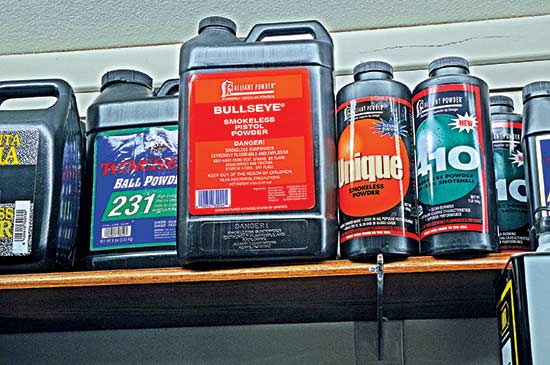When More Means Less
Reloading To Save Dough
My objectives for reloading rifle cartridges are different than handgun cartridges. The objective for rifle rounds is to develop the ideal load for a specific purpose. Achieving the best possible performance is the primary goal. I prefer to shoot reloads even when, as sometimes happens, they cost more than factory cartridges.
Saving money’s my primary objective with handgun cartridges. I want to develop loads which are safe, reliable, adequately accurate, and similar in ballistics and recoil to factory cartridges. I then crank them out by the thousand.
Of the four components in a handgun cartridge, the bullet is the most expensive. Back when I had more time than money, bullet casting let me shoot as much as I wanted. When you’ve cast, sized and lubed 5,000 bullets with a two- or four-cavity mold, you’ll sure enough know the value of a bullet! I haven’t cast a bullet in a long time but there’s still satisfaction in having a few carefully greased bullet molds on the shelf, knowing I can always have bullets.
It Adds Up
There’s no practical way for an individual to make primers or smokeless powder. With a moderate load of fast-burning powder such as W-W 231, bought in 8-lb. kegs, the powder cost for 9mm or .45 ACP loads can be as little as 1.5 to 1.8 cents per shot. Primers in lots of 5,000 are advertised online at about 3 cents apiece.
New, high-quality cartridge cases from reputable manufacturers such as Starline cost online around $130 to $180 per thousand for cartridges such as 9mm, .38 Spl., .40 S&W and .45 ACP. With standard pressure loads, I have no trouble reloading cases 15 to 20 times, bringing case cost per shot to around a penny.
Casting lead bullets in quantity is hard work and carries health risks. A number of commercial firms are turning out cast bullets of high quality for moderate prices. I especially like plated bullets. I didn’t have those alternatives back in the ’70s, or I probably wouldn’t have taken up bullet casting.
How To Save
Buy in bulk. I consider units of 1,000 as minimum, and often discounts are to be had on larger quantities. I used to get together with fellow club members to order primers and bullets in quantities of 50,000, or 64-lb. lots of powder. I was once averaging 25,000 rounds annually, and small cost savings per unit really add up fast.
Manage your brass carefully. Cartridge cases are the only component reused. Getting 15 to 20 reloads per case is the key element in reducing costs from 15 cents a case to under a penny.
I like to practice alone with a large drop cloth to catch fired cases. I hate losing cases, and also hate having old .380 ACP cases mixed with my .38 Super +P cases — or .45 ACP cases with small primer pockets mixed with my large primer pocket cases.
Bell cases just enough to start a bullet, and when possible apply a taper rather than a roll crimp. The less case necks are worked the longer they will go without developing cracks. Annealing would help as well, but I just don’t have the time or inclination.
Be flexible and look for bargains. W-W 231 is my favorite .45 ACP powder. I never hesitated to substitute others close to it on burning rate charts if the price was right. For safety’s sake I recommend buying only full containers with the seal intact. I remember buying a keg of W-W 452AA from a retired trapshooter. It was a bit dirtier than 231, but at less than half the price I could put up with it!
You younger guys should have some great buying opportunities in the years ahead. The baby-boomer old timers are starting to die off. There will be lots of estate sales of our stockpiles of powder, primers, bullets and cases, not to mention reloading equipment. Dang, I need to do more shooting!
Speed costs money. I started reloading 50 years ago with a $10 Lee Loader and have used single stage, turret and progressive loaders up to the wonderful Dillon RL1050. If you want to shoot 100 rounds a week — which is more than most handgunners — a single-stage press and a couple of hours a week will work. A progressive such as the classic Dillon 550 should be fast enough for almost any need. Just figure out what fits your needs best and get to reloading!
For more info: www.americanhandgunner.com/index






